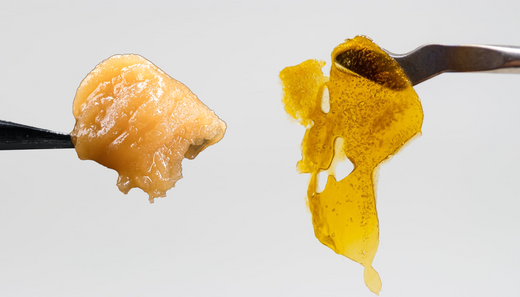In the ever-evolving world of cannabis, the conversation around concentrates often boils down to one thing: how do we extract the purest essence of the plant while honoring its natural integrity? Two heavyweights in this space are badder and rosin—distinct in their methods, textures, and appeal. Each has its own story to tell, and both represent the ingenuity and passion that fuel this industry.
The Science of Extraction
Badder is a product of chemistry, extracted using solvents like butane or propane through a method known as butane hash oil (BHO) extraction. Post-extraction, it undergoes a process of whipping and agitation, giving it its characteristic soft, creamy, and sometimes buttery texture. It's a perfect example of how human ingenuity has pushed cannabis to new frontiers, crafting a concentrate that’s potent and flavorful.
On the other hand, rosin strips away the lab coats and embraces simplicity. It’s a solventless concentrate, made using just heat and pressure. The oils are extracted directly from cannabis flowers or hash, creating a product that’s as close to nature as you can get. Rosin doesn’t rely on solvents or complex post-processing; it relies on the plant’s own richness.
Texture and Usability
If badder had a personality, it would be smooth and approachable. Its creamy, batter-like consistency is easy to handle, making it a favorite for dabbers who enjoy a versatile texture that clings effortlessly to a tool.
Rosin, however, wears a few different faces. It can range from a sap-like consistency to a more stable, glassy texture, depending on the starting material and production method. This variability is a testament to the artistry involved in its creation—it’s a hands-on process that rewards patience and attention to detail.
Purity vs. Potency: A Delicate Balance
Badder, for all its richness and potency, carries a slight caveat: the potential for residual solvents. While post-processing removes most of these impurities, there’s always a conversation to be had about purity. That said, badder is often celebrated for its high THC levels and its ability to deliver a powerful, flavorful experience.
Rosin, by contrast, doesn’t ask you to compromise. Free from solvents, it stands as a purer, more natural option. For those who prioritize a connection to the plant and a cleaner experience, rosin offers a path that feels less engineered and more authentic. While it may not always match badder’s THC levels, it compensates with the unfiltered essence of cannabis.
Why the Debate Matters
The differences between badder and rosin highlight a broader question in cannabis: what do we value most? Is it the precision and potency of advanced extraction methods, or the purity and simplicity of solventless craftsmanship? For some, badder’s creamy texture and potent kick make it the ideal choice. For others, rosin’s natural process and clean appeal resonate more deeply.
Both have a place in the cannabis world, and both speak to the passion that drives this industry forward. As we continue to explore what this plant has to offer, it’s important to celebrate these differences—not as divisions, but as the diverse expressions of cannabis itself.
After all, this journey is about more than just consuming a product—it’s about connecting to something greater, something that has the power to heal, inspire, and unite us. Whether you reach for badder or rosin, you’re participating in a legacy of innovation, respect for the plant, and belief in its potential to make the world a better place.
-- Miguel Brito, CEO of The Trimmer Store, brings a wealth of experience to the cannabis industry. From his early days in cultivation to his expertise in processing and consulting, Miguel is dedicated to elevating industry standards.

